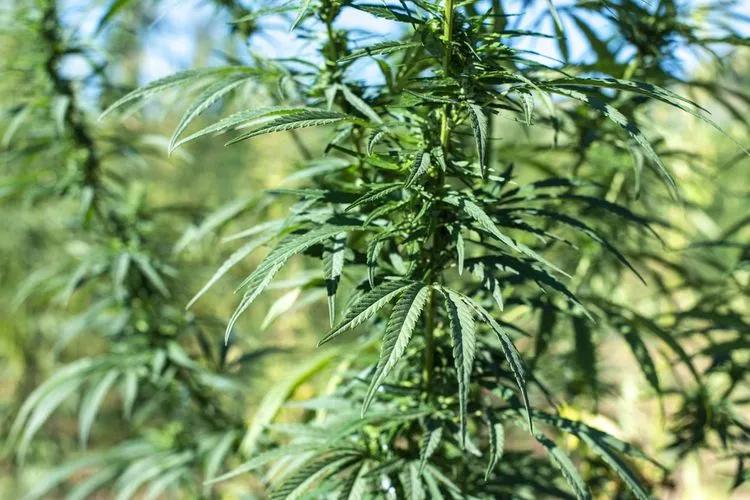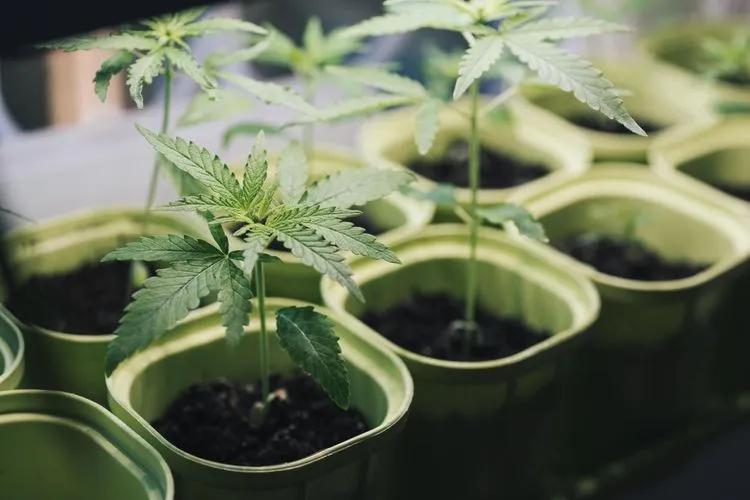How To Take Care Of Weed Plant
Pay attention that growing marijuana may be subject to special restrictions and regulation in your country or state. Please contact your attorney to obtain advice before cultivating cannabis.
Disclaimer
Pay attention that growing marijuana may be subject to special restrictions and regulation in your country or state. Please contact your attorney to obtain advice before cultivating cannabis.

Even though growing marijuana is a simple process if you stick to the rules, many beginners still wonder what and how to do it. And we understand your concerns! Everyone started somewhere, and we are ready to pass on our accumulated knowledge to you. That's why we present you with a step-by-step beginner's guide to growing marijuana.
Also, remember that these instructions are the very minimum that should not be ignored. Your biggest mistake may not only be scrolling through the information that can be critical to your plants; it can also be thoughtless experimentation. This can be fatal to your plants. Take notes!
Step 1. Choose between indoor and outdoor cultivation
Indoor cultivation may seem most attractive to you since it is the ability to control all indicators yourself: light, temperature, and so on. However, it is worth remembering that the plants will depend only on you in this case, and improper care can kill them. You also need to take into account that for growing outdoors, you need a lot more equipment, which means spending a lot of money.
If you choose strains for beginners, then look for those resistant to disease or temperature extremes. This will make it easier for you to care for your outdoor marijuana. This type of cannabis growing is a little easier and cheaper; it is only important to maintain important indicators. It's not hard at all if your climate is right for your particular strain. Note that this is more of a seasonal growing type and is not suitable for winter.
Step 2. Lighting

Whatever your choice of growing location, it is worth making sure that the plant receives a minimum of 8 hours of sunlight. Besides the sunlight, you can opt for fluorescent bulbs or special LED grow lamps. This is a crucial option if you are planting marijuana inside. Also, you might need additional light if you are growing outdoors, but the climate there is not that sunny.
Step 3. Growing Medium
Marijuana plants require soil that is rich in minerals and has good drainage. If you have decided to grow cannabis outdoors, you need to understand that not all soil types are suitable for this plant. Thus, we recommend having your soil tested: this is a relatively cheap service that will provide you with crucial information on your soil’s type, pH drainage abilities, and so on. This will also enable you to select the most suitable fertilizers.
Slightly acidic silty soil with a pH range of 5.0-7.0 is perfect. If you have this one - congrats, you are lucky! If not - equip yourself with suitable fertilizers. Another lifehack from experienced growers is to dig a big hole and add fresh soil there before planting - this will enrich your garden soil.
You can also try growing the plants in pots - this is more convenient as they are mobile. In this case, use all the potting mixes rich in nutrients and organic matter with a pH of 5-7.
Step 4. Nutrients

Choosing the right balanced nutrition for your plants is probably the most challenging step. There are a lot of things to take note of, as well as tinker with the correct dosage. We already have an article on this topic - read for a detailed guide.
Controlling the pH of your plant will also be important. If it is too low or too high, then marijuana will not be able to absorb the nutrients. That can lead to the death of the plant.
Step 5. Seed Germination
Choose feminized or automatic seeds. You will need a glass of water, a paper towel, and a small plate. It is better to follow the biodynamic calendar as well. Once the seeds have sprouted, you can plant them in your chosen soil.
After that, little is left to do. We do not have universal rules because everything will depend on the strain that you choose. Carefully study what requirements your particular weed has, and act according to the instructions.
If you think harvesting is the end of growing, then this is a big mistake! Remember to store the buds in a dark, dry, and ventilated place until completely dry. Otherwise, your crop may get moldy.
How to Take Care of a Weed Plant at Home?
Taking good care of a cannabis plant at home requires attention to several essential aspects, such as:
- Lighting: Provide the right amount of light and dark for optimal growth. For indoor growing, use a combination of LED and fluorescent lights, and adjust the lighting schedule based on the plant's growth stage. For the flowering to take place, cannabis needs to follow a strict light and dark cycle.
- Water: Keep the soil moist but not soggy, and avoid standing water. You can also use hydroponic systems to grow cannabis without soil. To check when exactly your greenie needs a sip, lift a pot and remember how heavy it feels after the watering.
- Nutrients: Give the plant the proper nutrients at the optimum time. You can use a compound specifically developed for marijuana or a well-balanced, all-purpose fertilizer.
- Airflow: Provide good air circulation to reduce the risk of mold and mildew and avoid exposing your plants to extreme temperature fluctuations.
- Pruning: Periodically pruning your plants can help to promote a healthy growth habit, encourage bushier growth, and increase yields.
- Pest control: Inspect your plants regularly for pests and diseases, and treat them immediately (for instance, with neem oil) if you see signs of pest infestation or an infection.
By following these basic guidelines, you can give your cannabis plants the care they deserve for healthy, strong, and vigorous growth.
How to Take Care of Potted Weed Plants on Daily Basis
Cannabis is easy to grow once you get the routine right. The thing with routine, though, is all in the word itself: it's all about regularity or habits. Here are some healthy patterns to include in your cannabis growing routine:
- Watering. Cannabis is a high-use water plant, requiring anywhere from 2.5-6 gallons (2.5-6 gallons) of water per day. However, the correct amount depends on the growth stage and the growing conditions (if it's an indoor or outdoor plant, temperature, soil type, end-use, etc.) If you overwater your plant, you might have to deal with mold... Ew. Proper drainage is your best friend!
- Temperature. During the day, keep the temperature at a comfortable range of 76 to 78°F (24 to 26°C), and at night, let it cool down to 65 to 68°F (18 to 20°C).
- Lighting. HID lighting is known for its high efficiency in cannabis cultivation, outperforming fluorescent lighting in terms of yield. This makes HID lighting the preferred option for many growers. You should also work on a proper light-dark cycle to ensure your plants germinate and flower in time.
Just as people, plants need a healthy routine to thrive. Remember, the care routine is only difficult in the beginning!
FAQ
How Much Water Do Weed Plants Need Daily?
Weed plants need about 2.5-6 gallons (2.5-6 gallons) of water per day. However, the exact amount may differ due to a variety of factors. Learn more about your greenie before you water it!
Is It Hard to Take Care of a Weed Plant?
If you know the tips, it’s not hard to make your cannabis thrive! As long as you maintain a healthy care routine, your greenie should not present a big challenge neither as an outdoor, nor as an indoor plant.
Do Weed Plants Need Sunlight or Just Light?
HID lighting is perfect for growing cannabis indoors. If you have an outdoor greenie, keep in mind that it needs about 6 hours of direct sunlight a day.
